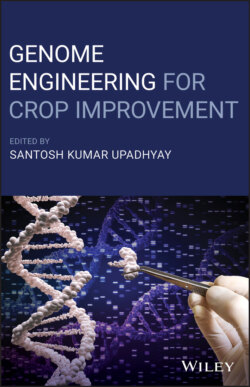Читать книгу Genome Engineering for Crop Improvement - Группа авторов - Страница 55
3.4.1.8 Soybean
ОглавлениеSoybean (Glycine max L.) is an old polyploidy crop with immense economic benefits. The soybean genome is complex and probably arisen by two rounds of genome‐wide duplications or polyploidy events (Innes et al. 2008). Though several QTLs were mapped on the soybean genome before the publication of soybean genome sequence, the identification of underlying genes responsible for the quantitative trait of interest was rare (Watanabe et al. 2009). The availability of genome sequence of soybean has accelerated mapping and identification of genes responsible for various qualitative and quantitative traits (Schmutz et al. 2010).Soybean is an important crop owing to its potential for supplying protein, oil and animal forages. The world soybean production in the year 2019 was approximately 358.65 million tons. The US was the largest producer with 120.52million metric tons. Other major countries such as Brazil, Argentina, and China contributed 117, 55.30, and 15.90 million metric tons, respectively (http://www.sopa.org/statistics/world‐soybean‐production/).The classical breeding approaches are not affected due to limited genetic variability available in the germplasm. However, there are several ways through which the classical breeding approaches deals and is able to incorporate the traits of interest in elite cultivars. However, if cultivars show low genetic diversity, their existing genes/alleles may not be able to cope with new environmental stresses. The novel genes/alleles can be incorporated in existing germplasm from wild relatives and/or created by random mutagenesis. However, the incorporation of large genome from wild relatives may cause severe damage to the elite germplasm, i.e. low production making long breeding cycles essential to purify the background while reserving the introduced attribute. The utilization of Marker‐assisted breeding (MAB) which is marker‐assisted selection (MAS) and genomic selection (GS) can speed up the process and has been well documented to achieve the objective (Crossa et al. 2017; Zhang et al. 2018). In modern times, the targeted mutagenesis has been successfully exploited in many crops for several desirable phenotypes with no exception to soybean.
